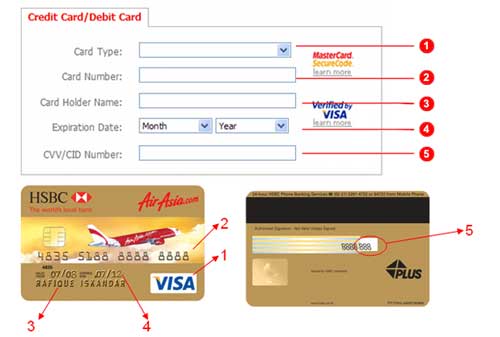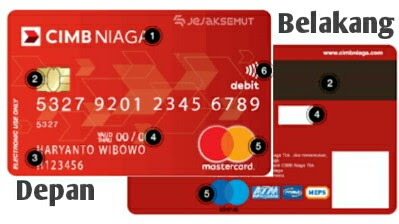Apa Itu Kode CVV / CVC2 pada Kartu Kredit & Debit BCA? Dimana Letaknya

The advancement of technology has changed the way we make payments and handle our finances. One of the most popular methods of payment today is through credit and debit cards. These cards have become an essential tool for conducting various financial transactions, whether it’s shopping online or making payments at retail stores.
When it comes to credit and debit cards, there are several critical pieces of information associated with them. One such piece of information is the CVV or CVC2 code. In this article, we will discuss what the CVV/CVC2 code is, specifically in relation to BCA credit and debit cards, and where it can be found on these cards.
CVV/CVC2: Apa Itu dan Apa Fungsinya?
CVV stands for Card Verification Value, while CVC2 stands for Card Verification Code. These codes are typically found on the back of credit or debit cards and serve as a security feature. The primary purpose of these codes is to verify the legitimacy of the card during online or phone transactions, thus protecting the cardholder from potential fraudulent activities.
CVV/CVC2 codes are typically required when making online purchases, as they provide an additional layer of security. By requiring the cardholder to enter this code during the transaction, it helps ensure that the person conducting the transaction is in possession of the physical card.

Keuntungan Menggunakan CVV/CVC2 pada Kartu Kredit & Debit
The use of CVV/CVC2 codes brings several benefits for cardholders. These benefits include:
1. Enhanced Security: One of the primary advantages of using CVV/CVC2 codes is the enhanced security they provide. By requiring this code during transactions, it reduces the chances of fraudulent activities.
2. Protection Against Unauthorized Use: CVV/CVC2 codes act as an additional layer of protection against unauthorized use of the card. Even if someone manages to obtain the card number, they would still need the CVV/CVC2 code to complete a transaction.
3. Secure Online Transactions: When making online purchases, CVV/CVC2 codes offer an added level of security. Since the code is not stored on the magnetic stripe or embossed on the card, it reduces the risk of unauthorized individuals gaining access to this information.

Kekurangan CVV/CVC2 dalam Kartu Kredit & Debit
While CVV/CVC2 codes provide significant security benefits, there are a few drawbacks to consider as well:
1. Limited Protection: Although CVV/CVC2 codes offer an additional layer of security, they are not foolproof. Skilled hackers can still find ways to bypass this security measure and conduct fraudulent transactions.
2. Vulnerability to Phishing Attacks: Phishing attacks involve tricking individuals into providing sensitive information by posing as a legitimate organization. In some cases, fraudsters might attempt to gain access to CVV/CVC2 codes through phishing techniques.
3. Non-Existence of CVV/CVC2 in Physical Transactions: While CVV/CVC2 codes are necessary for online and phone transactions, they are not required for physical transactions. This means that when making payments at retail stores, the CVV/CVC2 code is not used, leaving these transactions more vulnerable to fraud.
Mengenal Letak CVV/CVC2 pada Kartu Kredit & Debit CIMB Niaga

CVV/CVC2 codes are found in different locations depending on the card issuer. For CIMB Niaga credit and debit cards, the CVV/CVC2 code can be found on the back of the card, just above the signature panel. The code is a three-digit number printed in reverse italics.
It is essential to keep in mind that CVV/CVC2 codes should never be shared with anyone. They are meant to be kept confidential and only used by the cardholder during authorized transactions. Sharing this code with others increases the risk of fraudulent activities.
Bagaimana Cara Mengetahui CVV pada Kartu Debit BRI?
For BRI debit cards, the CVV code can be found on the back of the card, just above the signature panel. It is a three-digit number printed in reverse italics, similar to other card issuers.
To protect the security of your information, it is crucial to keep the CVV code confidential. Do not share it with anyone and do not write it down anywhere. If you suspect that someone else might have gained access to your CVV code, contact your bank immediately to report the issue and take necessary actions to secure your account.
It is also important to note that CVV codes are not stored on the magnetic stripe or the chip of the card. Therefore, even if someone manages to clone your card, they would still need the CVV code to complete online transactions.
Conclusion
In conclusion, CVV/CVC2 codes are essential security features found on credit and debit cards. They provide an additional layer of protection during online and phone transactions, ensuring that the person conducting the transaction is in possession of the physical card.
While CVV/CVC2 codes offer significant security benefits, it is crucial to remain cautious and protect this information from unauthorized individuals. Never share your CVV/CVC2 code with anyone and report any suspicious activity to your card issuer immediately.




